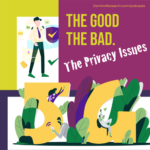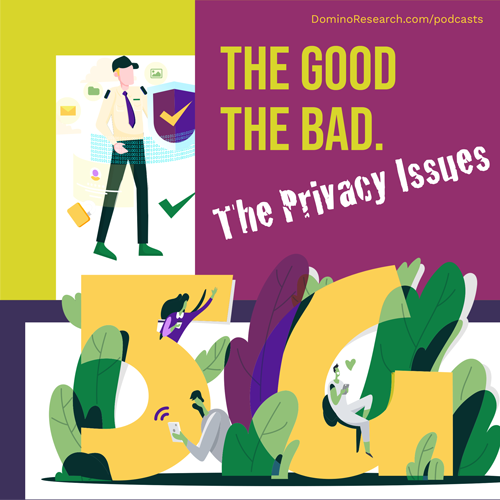
We are talking 5G on this weeks episode of the podcast!
Welcome to the show (virtually) and here’s a quick rundown of today’s topic – as you likely know, 5G is coming to an internet near you, and it’s being touted as the way the world is really going to change. It’s being billed as a way to ramp up IoT (internet of things), bump up connection speeds, and create an overall Jetson style experience for everyone who gets in on it.
[LISTEN: The Dark Side of Influencer Marketing – PODCAST EPISODE]
Is this reality or just hype? Is it possible that 5G can actually bring so much more connectivity to our lives that we will start living in the world depicted by science fiction writers in the 1950s? Are we looking at autonomous flying cars that will whisk us from place to place, while we watch movies from our personal cloud during the trip?
Or is it a more likely possibility that our data, our personal information, all the things we think we own, that these will be exposed to more and more third parties, whether or not they are really relevant to the services they will be providing?
Hey, you! Get off of my cloud!
There are already plenty of rumblings about Huawei and other 5G service and hardware providers, and the US government has been working diligently in an attempt to block some of these companies from being awarded contracts in the US, the EU, and other locations.
Next on the episode, we’re going to touch on the potential health issues that 5G transmissions could potentially bring to the party. There are plenty of people – and at least one city – that feel strongly enough about the potential health risks from 5G that the technology has been banned from use.
That’s countered by those who argue that the technology is going to enable major advancements in the technical fields like remote surgery or medical diagnosis, so-called smart cities, and other beneficial technology for the masses.
Ushering in a New Era: A Look at 5G Technology
5G, the fifth generation of cellular network technology, is poised to revolutionize the way we connect and interact with the world around us. It promises to be a significant leap forward from its predecessor, 4G LTE, offering blazing-fast speeds, ultra-low latency, and the ability to connect a massive number of devices.
At its core, 5G operates on a different set of frequencies than 4G.
This allows for significantly faster data transfer rates. While the theoretical peak speeds of 5G can reach a staggering 20 Gigabits per second (Gbps), real-world averages are still expected to be considerably lower, but much faster than 4G’s typical speeds. Imagine downloading a high-definition movie in seconds or experiencing virtually lag-free video conferencing.
However, speed is just one piece of the puzzle. Latency, the time it takes for data to travel between two points, is another crucial factor. 5G boasts significantly lower latency compared to 4G. We’re talking milliseconds compared to tens of milliseconds. This near-instantaneous response time opens doors for real-time applications that require split-second precision. Imagine remote surgery performed by a doctor miles away, or self-driving cars reacting to their environment in real-time.
Beyond speed and latency, 5G offers a dramatic increase in network capacity.
This means it can handle a much larger number of connected devices simultaneously. This is particularly significant for the Internet of Things (IoT), where billions of sensors and devices will be collecting and transmitting data. From smart homes with interconnected appliances to connected cities with intelligent traffic management systems, 5G provides the foundation for a truly interconnected future.
The implications of 5G extend far beyond personal smartphones. Here are some potential applications that showcase its transformative power:
- Enhanced Mobile Broadband: Imagine experiencing seamless streaming of high-definition content, even in crowded areas. 5G can handle the surge in mobile data consumption driven by video and augmented reality applications.
- Ultra-Reliable Low-Latency Communication (URLLC): This enables mission-critical applications like remote surgeries, autonomous vehicles, and industrial automation to operate with near-instantaneous response times.
- Massive Machine Type Communication (mMTC): This caters to the massive number of devices expected in the IoT, allowing for efficient data exchange between sensors and machines.
Of course, with any new technology, there are challenges to consider. The rollout of 5G infrastructure requires significant investment from network providers. Additionally, concerns exist regarding the health impacts of the higher frequencies used in 5G, although scientific evidence to support these claims is currently limited.
Despite these challenges, 5G technology is here to stay. As the infrastructure expands and devices become more compatible, we can expect to see a wave of innovation that will redefine how we live, work, and connect with the world around us. The future of connectivity is undoubtedly 5G, and it’s poised to usher in an era of unprecedented possibilities.

